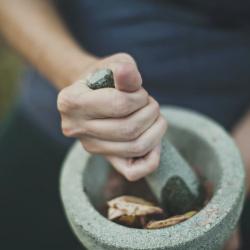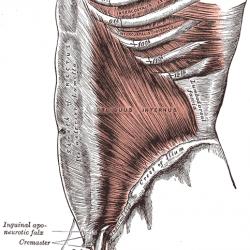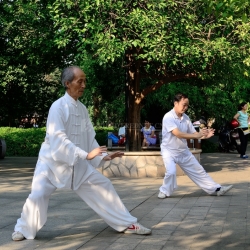How To Build Muscle At Home Without Any Equipment
To build muscle you need to lift weights. That’s the conventional wisdom on strength building, and it’s certainly true that weight training is an excellent way to overload your muscles and force them to grow.
However, lifting weights isn’t the only way to gain muscle. Weights help you gain muscle because they provide resistance which forces your body to adapt and grow, bodyweight exercises can also do the same thing.
Beyond the physical benefits of bodyweight exercises there are also numerous other benefits including the fact that they are free and, if you live in an apartment, you won’t annoy your neighbour by dropping dumbbells on the floor (if you do eventually want to incorporate dumbbells into your home workout check out this article on reducing gym noise - it has a few handy tips which can be incorporated into your home to reduce vibrations).
When muscle growth is your primary goal the key thing to remember is if you can do more than 15 repetitions of an exercise before you reach failure then it is too easy and you need to modify the movement to increase the resistance.
Below we talk you through some simple exercise variations that will challenge your muscles and help you build serious strength from the comfort of your lounge.
Push-Ups
The daddy of bodyweight exercises, the humble press up is both loved and loathed in equal measure.
Whether you’re a muscle-building novice or a muscle-bound adonis the press up can be used to pack on some serious mass, it works your chest, arms, shoulders, core and your back muscles get involved too.
Have a go at the following press up variations, aim to do 4 sets of as many repetitions as you can manage. If you can manage 15 repetitions then move onto the next (harder) variation:
- Elevated push-up - if you’re new to physical training then the elevated press-up is a great place to start, place your hands on an elevated surface such as a table or sofa with your feet outstretched on the floor and get going. As you get more proficient at this lower the height of the implement you are using to increase the difficulty.
- Flat (floor) push-up - Just you and the floor, lie horizontally on the floor with your hands shoulder-width (feel free to experiment with wider and narrower stances when you are comfortable) apart and get pushing!
- Single leg push-ups - When you can easily do 15 flat push-ups try lifting one leg off the floor, this increases the amount of bodyweight you have to push, making it harder and building more muscle.
- Elevated feet push-up - to make your push-ups even harder elevate your feet, you can do this easily by putting them up on a sofa. This means that your shoulders are now bearing the majority of your bodyweight.
- Handstand push-up - These are hard so don’t rush to try these until you have a good level of shoulder strength. They involve doing a handstand against a wall and then simply pressing! The best way to build up to these is by doing elevated feet push-ups against a wall. Walk your feet a few steps up the wall, as you get stronger walk your feet further up the wall until eventually, you are doing full handstand push-ups!
- Single-arm push-up - The Single-arm push-up is a great variation for people who are fairly advanced in their bodyweight exercise skills. Stretch out your legs as far as you can, so that you can create a tripod with your one pressing arm. This variation will also build a lot of core stability as well as shoulder strength.
Squats
If you’ve been to a gym before you’ll be familiar with the humble squat, practised by everyone from powerlifters to Zumba enthusiasts.
You may think that the only way to pack on muscle with by squatting is with a heavy barbell on your back but this is not the case.
When you’ve mastered the basic bodyweight squat here are a couple of variations you can try to add resistance and challenge your muscles to grow!
- Jumping Squats - Just like a standard bodyweight squat but with added intensity! When you get to the bottom of your squat explode up into a jump as fast as you can so that you get as high as you can - this forces your muscles to work much harder.
- One-Legged Squats - To do a one-legged squat successfully requires a whole lo9t of balance and co-ordination which will take some time to master! A good way of working around this is to hold onto the wall or a nearby piece of furniture as you squat. Single leg squats are great for building muscle because once you can do them you are effectively squatting double your body weight - just don’t forget to train both legs! For help with mastering the one-legged squat check out this article by Breaking Muscle.
Utilising Push-ups and squats together will allow you to challenge all of the major muscle groups helping you to build a strong physical base without the need for any equipment at all.
More to Read:
Previous Posts:







